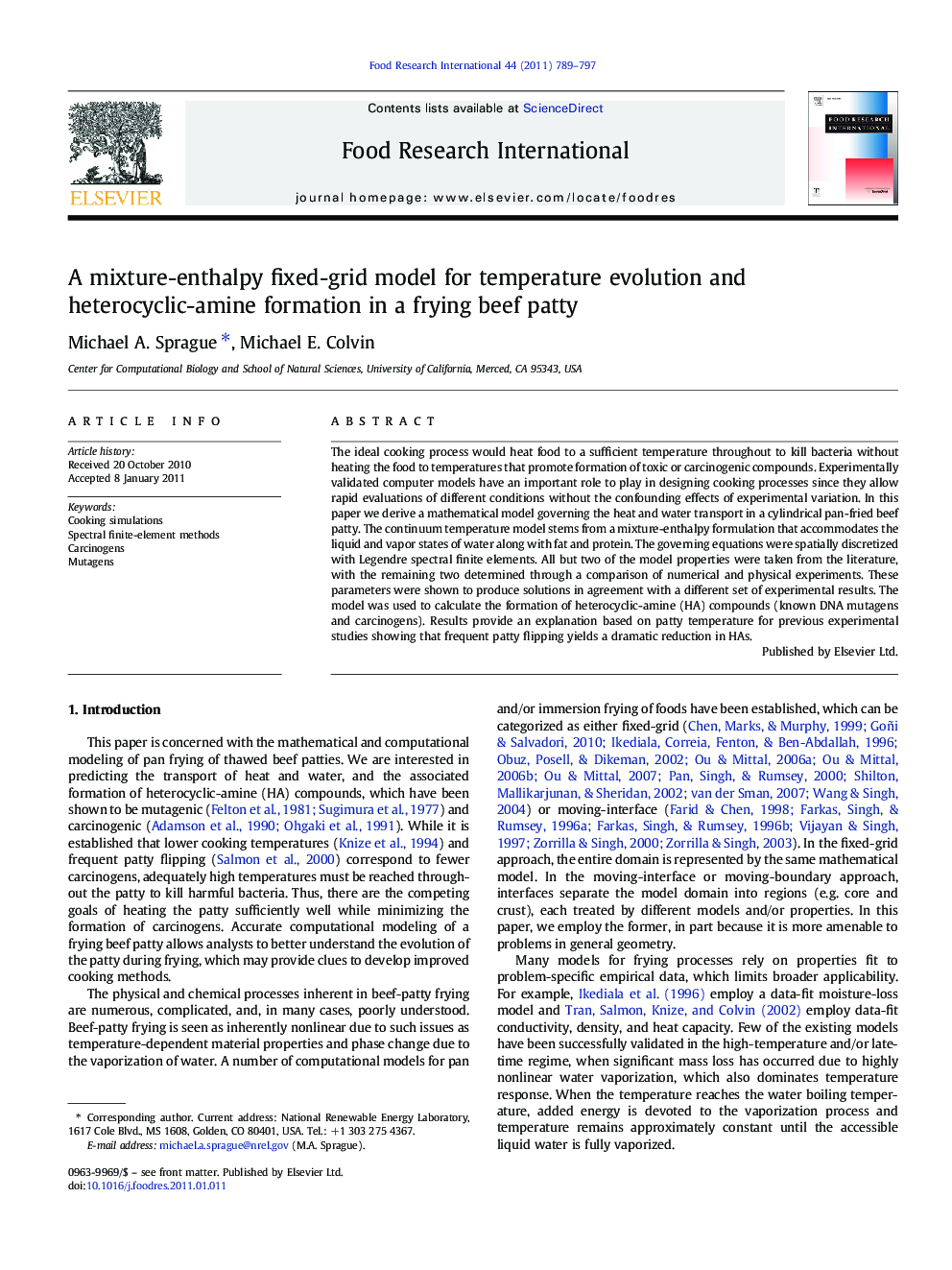| Article ID | Journal | Published Year | Pages | File Type |
|---|---|---|---|---|
| 4562000 | Food Research International | 2011 | 9 Pages |
The ideal cooking process would heat food to a sufficient temperature throughout to kill bacteria without heating the food to temperatures that promote formation of toxic or carcinogenic compounds. Experimentally validated computer models have an important role to play in designing cooking processes since they allow rapid evaluations of different conditions without the confounding effects of experimental variation. In this paper we derive a mathematical model governing the heat and water transport in a cylindrical pan-fried beef patty. The continuum temperature model stems from a mixture-enthalpy formulation that accommodates the liquid and vapor states of water along with fat and protein. The governing equations were spatially discretized with Legendre spectral finite elements. All but two of the model properties were taken from the literature, with the remaining two determined through a comparison of numerical and physical experiments. These parameters were shown to produce solutions in agreement with a different set of experimental results. The model was used to calculate the formation of heterocyclic-amine (HA) compounds (known DNA mutagens and carcinogens). Results provide an explanation based on patty temperature for previous experimental studies showing that frequent patty flipping yields a dramatic reduction in HAs.
